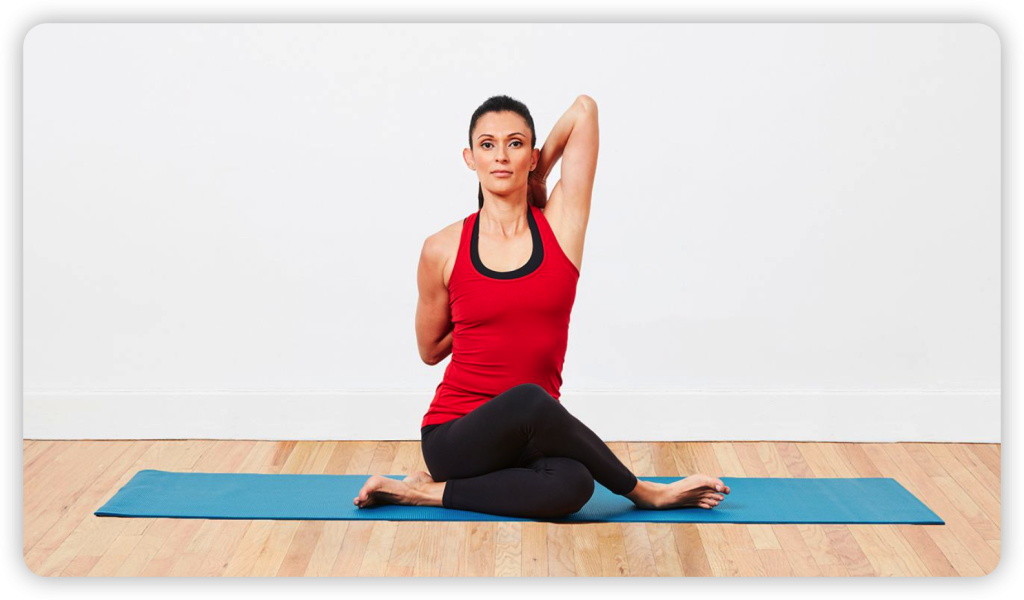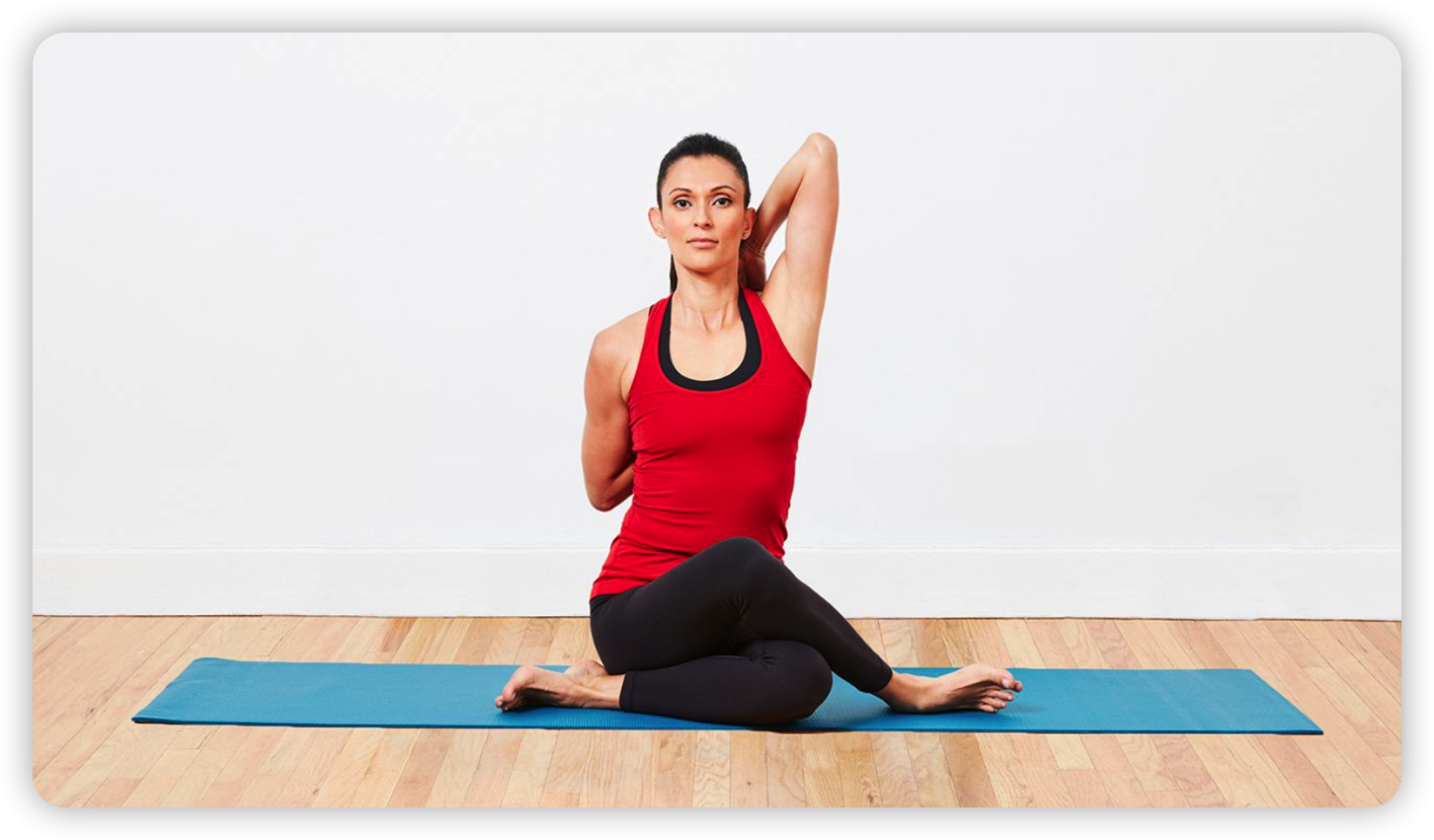The Cow Face Pose, known as “Gomukhasana” in Sanskrit, is a seated pose that targets multiple areas of the body simultaneously. From the legs to the arms and shoulders, it’s a pose that encourages both flexibility and relaxation. Here’s an in-depth guide on its benefits, modifications, and additional tips:

Benefits of the Cow Face Pose:
- Stretches the Shoulders and Arms: The unique arm position stretches different parts of the arms, including the triceps, biceps, and shoulders.
- Opens the Chest: This pose helps to counteract the rounded-shoulder posture many develop from desk jobs or constant use of smartphones.
- Stretches the Hips and Thighs: With the legs crossed, the pose provides a deep stretch for the outer thighs and hips.
- Calms the Mind: Holding the pose allows for a deep breath, which can be calming and centering, especially beneficial for stress, anxiety, and fatigue.
Modifications:
- Arm Position: If you cannot clasp your hands behind your back, as mentioned, you can use a strap or towel to bridge the gap between your hands. Over time, this will help increase flexibility.
- Leg Position: If stacking the knees is uncomfortable, you can simply extend the bottom leg straight out in front.
Tips:
- Maintain a Tall Spine: Ensure that your spine remains erect, and you’re not leaning to one side. This helps in maintaining balance and getting the most out of the pose.
- Breathe Deeply: The pose is an excellent opportunity to focus on deep, diaphragmatic breathing.
- Gentle Movement: As you enter and exit the pose, ensure that your movements are slow and controlled to avoid any strains or injuries.
It’s crucial to approach Gomukhasana with patience. Over time, as your flexibility improves, you’ll find it easier to get deeper into the pose. As always, consult with a yoga instructor if you’re unsure about your alignment or if you need additional modifications to make the pose more accessible.

